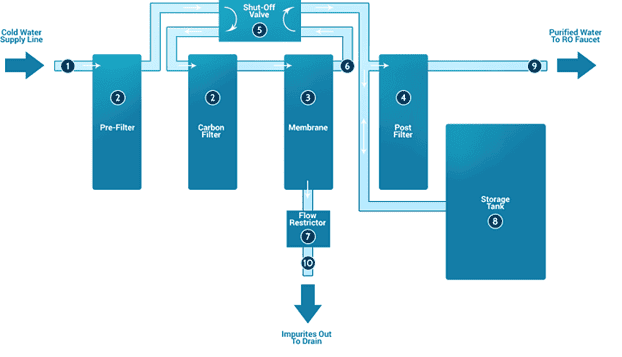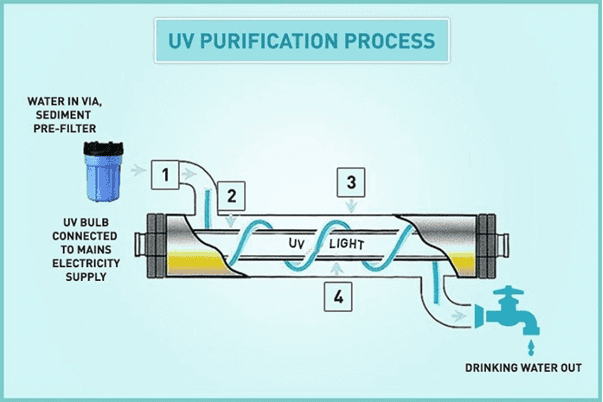Everyone is familiar with water purifiers, we often saw it in our houses, offices, etc. but did you ever thought how did they work? The science and technology behind the working of water purifiers, today we’re going to talk about all that.
Primarily there are two techniques that were adopted widely in the industries are Reverse Osmosis (RO) and Ultraviolet (UV) purification.
Both of them have their own pros and cons such as RO purifier is capable of removing ions, molecules and larger particles from drinking water whereas the UV purifiers have better efficiency of disinfecting bacterias, penetrate harmful pathogens & kill microorganisms too.
Considering the above pros & cons, one can conclude that there is no purification technology that was 100% safe that’s the main reason why purifier brands prefer the combination of RO + UV with other techniques rather than using it alone.
Water Purifier Working Process
There are many stages from which the water has to go through in the purifier which includes pre-filters, RO membrane, UV disinfection, post filters, TDS controller, etc. The whole process may vary according to different purifier brands/models, but here we’ll explain the general RO + UV purifier process.
The RO Purification
At the first stage, the water passes through a semi-permeable membrane which is used to blocks the dissolved solutes that filter the ions, pesticides, micro-organisms and other chemicals from water.
It consists of many sub-stages where the water passes through the pre-filters to remove dirt or sediments before reaching out to the RO membrane.
The post filters were used to remove the bad odor from the water using the carbon molecules power. These are some key points that you should take note of if you’re searching for the best water purifiers for your loved ones.
UV Disinfection Stage
The ultraviolet rays used in this process to kill different type of microorganisms such as bacteria. The UV lamp is used to produce the high power UV rays that deactivates the pathogens and their reproducing capabilities to make the water 99.99% pure to drink.
Apart from that there many other techniques that were used with these technologies. Some of them are TDS controller and PH value controller both used to make the water more tasty by controlling the PH and TDS levels in the water.







